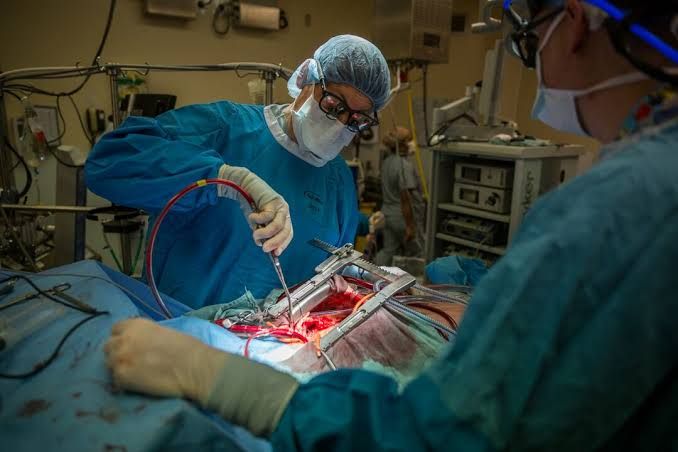The Workplace
Jun 19, 2019 • 26 views
The bright white light was shining on the tender heart, as I moved about it, trying to investigate, with my twitcher, the artery which was blocked. The staff sponged the patient’s body at intervals so that the blood oozing out from the coronary artery was cleaned. Being a cardio-surgeon, it was my duty to protect the patient from dying due to cardiac muscle failure.
Wearing a sterile gown with mask, caps and gloves, we were standing in the operation theatre. The patient lay on the OT table, with all her body except her chest covered in the sea-green linen. The linen was not as soft as velvet but was sterilised before being used. A gas mask was attached to the patient’s mouth, so that the anaesthetic could keep her unconscious until the operation was on. The operation theatre also had an array of machines, to check the vitals of the patients, along with various OT trolleys that held the instruments. Many nurses were rushing back and forth as I continued to inspect the site of the blockage.
The only sounds in the Operating Theatre were those of the the trolleys and monitors. The trolleys were being moved so that instruments could be autoclaved before I needed them. Some of these trolleys squeaked when they moved, a sign that the wheels have aged and may need to be replaced soon. The monitors beeped whenever there was a pulse and this pulse made a rhythm of its own. The most important sound was that of the beating human heart, which was once in a while superimposed by the squeaking. This heart beat was our hope, a proof that the cardiac muscles were still working and pumping blood. This ‘Lub Dub’ signified the movement of the vital fluid in our body, a sign that was still motivating us to complete this complex procedure.

The gloves that I wore, were the non-powdered kind, and so they gave a clammy feel to my skin. This clammy feel was something we were accustomed to, as we were to cutting open the chest skin of a patient harshly. The human body inside the skin seemed, to most people, a very delicate craft. Along with this, many thought and still think that the arteries in our bodies can break open if they are slightly poked. But, we the doctors, are among those who know the truth. The membranes of the various organs are very strong as are the arteries. There won’t be a hole no matter how many times you poke them. But, no one of course, tried to do on this real life, even though this was the only humorous aspect we found, about dissecting human bodies in medical school.
We had found the site of the blockage and now had to proceed to remove it. As soon as I held the cold forceps in my gloved hands, I shivered. This was the reason I was hated operating during the winters. Though an internal heating system was working inside the OT, the cold instruments brought from the outside were chilling. We reached the site of the blockage, and it was hard and calcinated. Slowly, I removed the plaque and then stitched the artery, before beginning to stitch the chest. The needle I used for stitching the skin was sharper than thorns. If not handled carefully, it could tear through my gloves.
The procedure was complete. Removing my mask and cap, I stepped out of the operation theatre and drew in a deep breathe. The air was fresh, unlike the air in the OT that was specially filtered and smelled different. And then I was thinking of the post-op room that I would have to make rounds of...
This was my workplace.
—————————-
The author has tried to make the article technically sound in all aspects, but if you find any errors, please point them out.
